Introduction
Mistakes made by managers can be regarded from different points of view. There are many lists of managerial mistakes differing according to the author’s experience and perception. What is paradoxical is that most of the mistakes formulated by the professor do not appear to be mistakes at first sight. They are usually recommendations worth following, which, however, become serious mistakes due to the incorrect form or extent of their implementation. This means that these managerial mistakes are not “rookie” mistakes or mistakes made out of ignorance of managerial attitudes or management principles. On the contrary, they are mistakes made by informed and, to a certain extent, experienced managers who have not had the opportunity to find out that even good and proven attitudes may create unwanted impacts if they have incorrect form or the extent of their implementation is not right.
Literature Review
A manager is a person who performs managerial functions such as planning, organizing, staffing, directing/leading and controlling to reach the selected goals effectively. A manager also makes decisions. The decisional role means that the manager is a decision maker. He must choose suitable alternative solutions to a problem and discover new effective ways of work performance as it is introduced by Rašticová et al. (2010). However, incorrect decisions made by a manger lead to achieving undesirable results and could be considered managerial mistakes.
Palmer et al. (2010) define in general that mistakes are not unusual for any individual, firm or industry, the retailing setting highlights issues of considerable theoretical importance and relevance for understanding management mistakes. According to Tjosvold et al. (2004) managers have to deal with mistakes to learn from them and reduce the probability of their future occurrence. Otherwise, these mistakes can result in negative outcomes, ranging in magnitude from small everyday mistakes to large-scale strategic and structural consequences as mentioned by Palmer et al. (2010).
Based on our survey of the most recently published papers dealing with managerial mistakes and their solutions, we can find that Taleb et al. (2009) present the six mistakes executives make in risk management and what you should do to protect your company, Palmer et al. (2010) present a brilliant mistake! Essays on incidents of management mistakes and mea culpa, Hareli et al. (2005) present the role of emotions in employees’ explanations for failure in the workplace, Tjosvold et al. (2004) present team learning from mistakes: The Contribution of Cooperative Goals and Problem-Solving, Dubrovski (2007) presents management mistakes as causes of corporate crises, Baumard et al. (2005) present learning from failures, Hunter et al. (2011) present leaders make mistakes, and Chi et al. (2011) present crisis management of the pricing mistakes committed by Dell.
Recently, another viewpoint on the problems of the managerial mistakes was presented by Professor Košturiak et al. (2008), who had introduced fourteen types of managerial mistakes, which may lead to weakening the firm’s position or even to its liquidation.
Professor Košturiak is a significant figure both in the academic circles (he is a professor at several universities and has published many specialized books such as Podnik v roce 2001, Just in Time, Simulation von Produktionssystemen, Projektovanie výrobných systémov, Industrial Engineering, Fraktálový podnik, Å tíhlý a inovativní podnik, Inovace, Kaizen) and in practical management where he works as a consultant and a coach in innovations, strategic management, enterprise organization and industrial engineering. His references from a wide range of significant companies (for example Volkswagen, Sauer Danfoss, Daimler Chrysler, Visteon, Hella, Linet, Bonatrans, Å koda Auto, ÖBB, Siemens) prove not only his expert erudition but also his abilities to successfully apply his knowledge in practical company management. Thanks to this, his formalized knowledge gains significance among the expert public. That is also why the list of serious managerial mistakes compiled by Košturiak (2011) has become the basis for our research.
In the book, Innovations: Your competition advantage Košturiak et al. (2008) says: “There are many ways of company destruction. There is nothing worse than to consistently do the wrong things with good intentions. The history of unsuccessful companies is full of such examples. However, you will find mainly success stories in managerial bookshelves. What a pity.”
A questionnaire survey based on Professor Košturiak’s study is used in this paper to find out the opinion of students on this matter.
The specific objectives of this study are:
Introducing managerial mistakes presented by Professor Košturiak;
Investigating and evaluating students’ opinion about remarkable managerial mistakes;
Identification of mistakes made by company managers based on the knowledge of the companies that the students cooperate with;
and interpretation of the occurrence and the possible causes of the mistakes identified in the companies.
Methodology
For the purposes of the survey evaluation, the mistake definitions (Košturiak, Chaľ, 2008) formulated by Professor Košturiak have been itemized in the following way:
1. customer — master
2. perfect vision
3. maximum productivity
4. radical cost reduction
5. training in fast improvement
6. continual innovation of products and processes
7. investing in a perfect IS
8. outdoor training, psychological tests
9. recruiting top managers from other companies
10. mistrust of people
11. buying the most modern technologies
12. full use of technologies and people
13. managers focusing on results
14. changing things and people around frequently
To give the reader an idea how to understand the 14 items of managerial mistakes, an explanation of the first item “customer — master” is cited: “[It means] to follow solely the motto “our customer is our master” and fulfil all customers’ requirements without any discussion. To do exactly what the customer wants could be the fastest road to the company’s destruction. Wide and disorganized offers of many producers, complicated logistics and production — these are often the consequences of helpless business and marketing. It is good to have a wide offer if the customer chooses what is good for our company. To know what the customer wants, what are his secret wishes, and to blindly copy what he tells us, these are two different things. The first leads to creating value for the customer. The second leads to the loss of productivity, as well as the ability to innovate.” (Košturiak et al. (2008), p. 107, translated by J. V., F. K.).
86 students participated in our study. Participants were chosen according to the method of convenience sample. Students acquired knowledge of the companies under study usually during their student internships, short-time working experiences or employment in the companies.
The survey focused on two areas.
Firstly, we asked students which three mistakes they think are the most serious. Considering the fact that they are 4th year students of a faculty specialized in economics and management, adequately relevant opinions can be expected. Students could shape their opinion on the significance of the mistakes in a dialogue with their colleague before expressing them. The students could also suggest how to avoid these mistakes effectively.
The second area was related to the situation in a company that the student – respondent knew well. Based on their knowledge, the students could express their opinion on which mistakes formulated by Professor Košturiak seriously threaten the company.
Results
One of the aims of the survey was to identify the students’ opinions on the occurrence of managerial mistakes and the frequency of their occurrence. Based on the students’ answers to which three mistakes they think are the most serious, the mistakes could be categorized according to the frequency of the occurrence of the answers. The mistakes were arranged in three groups (Table I). In the first group, the opinion occurrence is 10 to 20 percent; in the second group, it is 5 to 10 percent; in the third group, it is 0 to 5 percent.
Table 1: Frequencies of Mistake Occurrence as Seen by Students (Source: Made by the Authors)
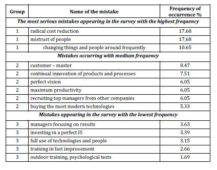
Fig. 1 visualizes the mistake frequencies as seen by students.

Fig. 1: Frequencies of Mistake Occurrence as Seen by Students (Source: Made by the Authors)
The first group of mistakes (occurring most frequently) concerns the aspects of the company’s inner environment. It points out that attempts for an intensive cost reduction are praiseworthy, but have their limits, which the students realize very well. When these attempts are too strong, a healthy development in the company is suppressed, the quality of the company processes and products is difficult to keep, the customers’ trust is lost and the overall results, which were supposed to improve thanks to the attempts for a radical cost reduction, get worse.
Mistrust of people and attempts for a radical cost reduction were identified as mistakes most frequently. The question of trust has been much discussed lately by Covey et al. (2008) and it is apparent that mistrust is a burden for a company bringing costs. Trust in people is connected to regarding people as the most important source available to a company as presented by Kopčaj (1997).
The frequency of occurrence of the two managerial mistakes mentioned above is considerably higher than that of the following mistakes (by 7 percentage points). Such evaluation of the significance of these mistakes by way of a student survey indicates a good quality of the respondents’ knowledge and judgement.
The survey has also shown that there is a group of mistakes that occur quite rarely. This result implies that these “mistakes” are generally considered little significant or not mistakes at all. These include managers focusing on results, extensive knowledge, and potential management (investing in a perfect IS, using technologies and people, training in fast improvement, outdoor training, psychological tests).
Another goal of the survey was to identify the frequency with which the mistakes occur in companies that the students know. The results also allow for comparing the mistake occurrence in companies based on specialization and size structure.
The results of the second part of the survey refer to the situation in a particular company. Based on their knowledge of a particular company, the students expressed their opinions on which mistakes formulated by prof. Košturiak seriously threaten the company.
Company Specialisations and Sizes
The total number of the companies examined is 86. Fig. 2 shows companies by industry. The size of the companies is seen in Fig. 3.
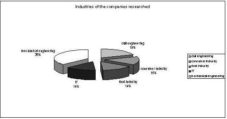
Fig. 2: Companies by Industry (Source: Made by the Authors)

Fig. 3: Companies by Size (Source: Made by the Authors)
In general, opinions of the students, the frequency of occurrence of some mistakes was significantly higher than that of the others. The situation is quite different when the students speak about particular companies that they know well (Table 2). There are not such big differences between occurrence frequencies as in the first case, which is apparent from the visualization of the results in Fig. 4.
Table 2: Mistake Occurrence Frequencies in Particular Companies (Source: Made by the Authors)
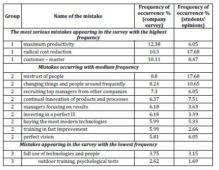
Table 2 shows the mistake occurrence frequencies in particular companies. In addition, there is information about the theoretical occurrence frequencies based on the students’ opinions.
There were significant differences between three mistake items:
Mistrust of people is considered to be the most serious mistake by the students (17.68% occurrence), However, when considered in connection with a particular company, this mistake was only identified with a frequency of 8.8%. This difference is probably caused by the fact that the mistake itself is considered very serious, nevertheless, when evaluating a particular company, the evaluators found that its real occurrence was considerably less frequent. Maximum productivity and radical cost reduction are evaluated reversely in each of the evaluations – this is probably caused by a close connection between the cost and productivity parameters and their inaccurate specification in the identification of managerial mistakes.
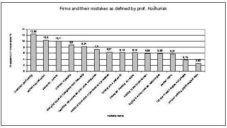
Fig. 4: Mistake Occurrence Frequencies in Particular Companies (Source: Made by the Authors)
Summary of Mistake Frequencies by Industries
The pie chart in Fig. 2 shows the industries in which mistake occurrence analyses took place.
Mistake occurrence was identified in each industry – Table 3.
Fig. 5 clearly shows the similarities and differences between the managerial mistakes’ occurrences in each of the industries monitored.
Table 3: Summary of Mistake Relative Frequencies by Company Size (Mistake Indication 1-14 — for Order Number Assignments, See the Methodology) (Source: Made by the Authors)
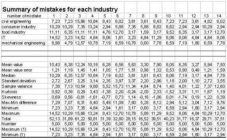
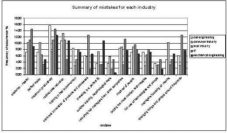
Fig. 5: Occurrence of Managerial Mistakes in the Industries Monitored (Source: Made by the Authors)
Interesting facts arising from the survey in terms of the industry structure are mainly related to the following mistakes:
- Customer – master: in well-established, traditional industries of civil and mechanical engineering, the occurrence frequency of this mistake is significantly lower than in three other industries.
- Radical cost reduction: the occurrence frequency of this mistake is much lower in IT (4.84%) than in other industries (10.78 – 13.24%).
- Training in fast improvement: the mistake of putting too much emphasis on training least occurs in consumer and food industries.
- Continual innovation of products and processes: this mistake least occurs in IT.
- Investing in a perfect IS: this mistake is least made by mechanical engineering companies.
- Recruiting top managers from other companies: this mistake occurs most frequently in IT companies.
- Mistrust of people: it is a mistake which occurs quite frequently in all industries with rare evenness.
- Buying the most modern technologies: this mistake least occurs in the consumer industry.
- Changing things and people around frequently: this is most frequently done in food industry and least in consumer industry.
Summary of Mistake Frequencies by Company Size
The pie chart in Fig. 3 shows the sizes of the companies in which the mistake occurrence analysis took place.
Mistake occurrence frequencies were arranged by company size – Table IV.
Fig. 6 clearly shows the similarities and differences between managerial mistake occurrence frequencies in each of the size groups.
Table 4: Summary of the Mistake Relative Frequencies by Company Size (Mistake Indication 1-14 — for Order Number Assignment, See the Methodology) (Source: Made by the Authors)
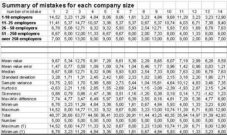
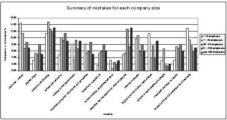
Fig. 6: Managerial Mistake Occurrence Frequencies by Company Size (Source: Made by the Authors)
Interesting facts arising from the survey in terms of the company size are mainly related to the following mistakes:
- Customer – master: the frequency of occurrence of this mistake is the highest in the smallest companies and the lowest in the biggest companies.
- Radical cost reduction: the smallest companies have the least tendency for radical cost reduction.
- Investing in a perfect IS: this effort occurs least in the smallest companies.
- Recruiting top managers from other companies: this is most often done by the biggest companies.
- Changing things and people around frequently: this is most often done by the smallest companies.
Conclusion
The evaluation of the occurrence frequency of managerial mistakes in companies structured by industry and size has brought interesting facts mentioned above. The reason why the connections identified exist can be speculated about or further researched.
The well-known slogan, “Our customer is our master”, is not much used in the well-established, traditional fields of civil and mechanical engineering. On the contrary, in IT fields, consumer and food industries, this slogan is applied more and may be the source of imbalance in satisfying the interests of the relevant parties involved. Disharmony created in this way is a usual mistake occurring in new and fast developing industries. The most frequent occurrence of this mistake in the smallest companies may be caused by their considerable and direct reliance on customers, low stability and vulnerability of the companies. In big companies, this mistake occurs in one of two cases.
The reason for the high frequency of occurrence of radical cost reduction in IT companies may be the fact that these companies realise the danger arising from this kind of attempts and take preventive measures. Another reason might be the fact that in IT companies (especially those specialized in software development), the prevailing costs are salary expenses. The smallest companies probably have the least tendency for radical cost reduction because they are often only beginning to grow and there is practically nothing to reduce and also because administration in these companies is directly controlled by the owners.
The mistake identified as continual innovation of products and processes occurs the least in IT companies probably because innovation is expected and required in this industry. It is an inseparable part of the industry existence and that is probably why it is not considered a managerial mistake.
Investing in a perfect IS as a managerial mistake which occurs the least in mechanical engineering companies probably because these companies often have long-term experience in looking for and desiring a “perfect” tool for management support and know that reality is often far from perfect. This attempt least occurs in the smallest companies because they naturally use simpler tools and the tendencies for improvement are yet to come.
Recruiting top managers from other companies is most frequently done by IT companies perhaps because there is a considerable lack of managers focusing on leadership rather than directive management, which does not work in IT. Top managers from other companies are most often recruited by the biggest companies that can afford it. However, it is not always a far-sighted decision.
Mistrust of people is not a mistake specific for managers. It is generally widespread and occurs frequently in all the industries monitored with rare evenness.
As to the survey carried out, it is important to realise again that it was about the evaluation of students’ opinions. Yet, a lot of information resulting from it confirms the well-known facts and corresponds to the managers’ long-term experience. To confirm this, statistical surveys should be carried out in particular companies.
Summary
As human mistakes may occur in our lives, managerial mistakes may occur in enterprises. Mistakes are of various significance and impact; some of these mistakes are negligible and can be overpassed, others can be crucial and endanger the existence of an enterprise. Consequently, studies dealing with monitoring, analysing and discussing managerial mistakes that recommend reducing their influence on existence of an enterprise are a hot topic.
This paper deals with monitoring and identifying the managerial mistakes in selected industrial areas in the Czech Republic using the category of managerial mistakes which was presented by Professor Košturiak, who introduced fourteen types of managerial mistakes. A questionnaire survey was used in this study to collect data from the third and fourth year students who specialize in management and economy. The purpose of this survey was to examine and evaluate the students’ opinions about remarkable managerial mistakes; identification of mistakes made by company managers based on the knowledge of the companies that the students cooperate with; and interpretation of the occurrence and the possible causes of the mistakes identified in the companies. Many of these students have practical experience thanks to their work or cooperation with enterprises during their studies.
The research showed that students in general consider as the most serious the following mistakes: radical cost reduction, mistrust of people, and changing things and people around frequently. When managerial mistakes were evaluated in the context of considering particular companies, the following mistakes were mentioned most frequently: attempting to reach maximum productivity, radical cost reduction, and attempts to subordinate everything to what the customer wishes. We estimated the occurrence of mistakes that are characteristic in specific fields or industries (civil engineering, mechanical engineering, IT, consumer and food industries), and that are characteristic for companies of various size.
Acknowledgements
This survey was supported by Specific Research of Brno University of Technology, 2013: “The Determinants of Management and Marketing Development in Context of Transforming European Union (Standard research FP-S-13-2053).”
References
Baumard, P. & Starbuck, W. H. (2005). “Learning from Failures: Why It May Not Happen,” Long Range Planning, Vol. 38, 281-298.
Publisher – Google Scholar
Chi, D. J. & Hung, H. F. (2011). “Crisis Management of the Pricing Mistakes Committed by Dell,” Management Decision,Department of Business Administration of National Cheng Chi University, No. 64, 860-873.
Publisher – Google Scholar
Covey, S. M. R. & Merrill, R. R. (2008). ‘Důvěra: Jediná Věc, Která Dokáže Změnit Vše,’ Management Press, Praha.
Google Scholar
Dubrovski, D. (2007). “Management Mistakes as Causes of Corporate Crises: Countries in Transition,” Managing Global Transitions, Vol. 5 No. 4, 333-354.
Publisher – Google Scholar
Hammond, J. S., Keeney, R. L. & Raiffa H. (1998). “The Hidden Traps in Decision Making,” Harvard Business Review, September-October, 3-9.
Publisher – Google Scholar
Hareli, S., Shomrat, N. & Biger, N. (2005). “The Role of Emotions in Employees’ Explanations for Failure in the Workplace,” Journal of Managerial Psychology, Vol. 20 No. 8, 663-680.
Publisher – Google Scholar
Hunter, S. T., Tate, B. W., Dzieweczynski, J. L. & Bedell-Avers, K. E. (2011). “Leaders Make Mistakes: A Multilevel Consideration of Why,” The Leadership Quarterly 22, 239-258.
Publisher – Google Scholar
Kopčaj, A. (1997). “Košatění Bohatství : 20% Poznatků Přinášejících 80% Bohatství. Zákony a Principy Určující Úspěšnost Procesu Košatění Bohatství,” Kopčaj-Silma 90, Rychvald.
Publisher
Košturiak, J. (2011). “Profil,” [online]. Fraunhofer IPA Slovakia, [cit. 2013-11-21]. Available <http://www.ipaslovakia.sk/Default.aspx?id=14&sub_id=436>.
Publisher
Košturiak, J. & Chaľ, J. (2008). ‘Inovace : Vaše Konkurenční Výhoda!,’ Computer Press, Brno.
Google Scholar
Palmer, M., Simmons, G. & Kervenoael, R. (2010). “Brilliant Mistake! Essays on Incidents of Management Mistakes and Mea Culpa,” International Journal of Retail & Distribution Management, Vol. 38 No. 4, 234-257.
Publisher – Google Scholar
Rašticová, M., Khateb F. & Koráb V. (2010). Management Theories and Practical Application, Akademické nakladatelství CERM, Brno.
Publisher
Taleb, N. N., Goldstein, D. G. & Spitznagel, M. W. (2009). “The Six Mistakes Executives Make in Risk Management,”Harvard Business Review, October, 78-81.
Publisher – Google Scholar
Tjosvold, D., Yu, Z. & Hui, C. (2004). “Team Learning from Mistakes: The Contribution of Cooperative Goals and Problem-Solving,” Journal of Management Studies, November 2004, 1223-1242.
Publisher – Google Scholar












